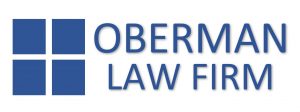

Top 10 Mistakes Dentists Make (Dental Law Radio, Episode 27)
With clients in about 35 states, Stuart Oberman and his dental law team at Oberman Law Firm have seen a bit of everything. In this episode of Dental Law Radio, Stuart reviews the top mistakes dentists make in their practice, starting with failure to recognize problem patients. Dental Law Radio is underwritten and presented by Oberman Law Firm and produced by the North Fulton studio of Business RadioX®.
TRANSCRIPT
Intro: [00:00:01] Broadcasting from the Business RadioX Studios in Atlanta, it’s time for Dental Law Radio. Dental Law Radio is brought to you by Oberman Law Firm, a leading dental-centric law firm serving dental clients on a local, regional, and national basis. Now, here’s your host, Stuart Oberman.
Stuart Oberman: [00:00:26] Hello everyone and welcome to Dental Law Radio. All right. Today’s topic, I am very passionate about. As I said before, we are a dental-centric law firm, Oberman Law Firm. Clients from multiple states, probably 30, 35 states last count, clients from California, Maine to Florida, all points in between. And what I see is the same, same mistakes over and over and over again, until I just have to beat my head against the wall.
Stuart Oberman: [00:01:05] So, I want to review for you Oberman’s Top Ten List of Mistakes. So, let’s start off, let’s run right into it. Mistake number one, failure to recognize problem patients. I can’t tell you how many calls a week I get, “I got this problem patient. What do I do? I got this problem right now. I got the patient in the chair. What do I do?”
Stuart Oberman: [00:01:32] Let me make this point real clear. And I’ve said this over and over and over again, you’re going to know you’ve got a problem patient before you put your hand in their mouth. You know why? Because when they called your office, they were rude. When they made the appointment, they were rude. When they went to your front desk to check in, they were rude. When they walked back to your chair, they were rude. They’ve cussed at your hygienist. They’ve cussed at your assistant. And yet you’re going to treat them. And you’ve got 17 people in your office tell you, “Doc, bad news. Doc, bad news.” And yet because you see $1,000 coming in your checkbook, you’re going to treat them.
Stuart Oberman: [00:02:14] Let me make this point clear, you touch one tooth and you bought that problem patient, and you will live with that patient forever. Get rid of that patient. Do not ever, ever, ever, ever treat a problem patient. Your gut is going to tell you, you’ve got a problem patient. And when that patient sits in your chair, before you touch them and they tell you what’s wrong, I don’t care what it is. You don’t do it. You do not do cavities. I don’t care. You do not do whatever that problem is. You get rid of that patient.
Stuart Oberman: [00:02:52] Two – a good friend of mine is going to kill me on this one – collections. Rule of thumb, my opinion is never, ever, ever send your patient to collections. We do a lot of board complaints, a lot of risk management, and I’m going to say at least 90 percent of all problems stem from collections. Once you send a patient to collections, you lose control of what the stature of that case is because then you’ve got some collection agency person harassing your patient and never ends. So, I mean, we’ve had clients before that have sent a patient to collections for a $100. So, they’ve got a problem, then they pay me $2,000 to put the fire out, so that is very good business sense. Do not send your patients to collections.
Stuart Oberman: [00:03:54] Mistake number three is, our dental offices are horrible at communication. They fail to advise the staff for the need of consistent, accurate documentation. Document your charts. Let me make this point clear, if you rely on your staff to document your charts, you’re going down a dark hole. It’s okay to delegate that. But at the end of the day, that’s your responsibility. If they put down the wrong x-ray right left side, tooth wrong.
Stuart Oberman: [00:04:25] And you go in front of the board and that board calls you out. Or you go in a deposition for malpractice claiming, that other attorney calls you out. What are you going to say? “Well, that was my staff’s problem. I didn’t do that.” And you got three people on the board or five people on the board, sitting and looking at you like, “Why do you have the wrong x-ray in the file? Why do you have the wrong x-ray marked?” “Well, it’s my staff’s problem, it’s not my problem.”
Stuart Oberman: [00:04:56] Do not rely on your staff for everything. You’ve got to document it. Teach them what is consistent, accurate, complete documentation. If it’s never in a file, it never happened. If it’s wrong in the file, it’s your responsibility.
Stuart Oberman: [00:05:16] Four – and this is an interesting problem – failure to maintain good chair side manner with patients. And let me tell you, there’s a difference. So, our younger doctors are enormously successful clinically. But the bedside manner is a little rough. It’s quick. They’re under pressure. Our doctors have been practicing a little bit longer, I would say, as a whole or probably a little bit better with chair side manner. That’s a broad statement, so I could have it in every case.
Stuart Oberman: [00:05:55] But chair side manner will keep you out of trouble. A very good friend of mine practicing for 30 years, never had a board complaint. Never had a malpractice claim. I asked her one day, I said, “How did you avoid this kind of trouble? Thirty years never had a board complaint. Malpractice claim, never.” She was, “Let me tell you what I did. First five minutes, I want to know how the family’s doing because it’s already in my chart. I know they’re married. I know the wife passed away. I know their child is sick. I know the child was sick. I know they’ve got kids in college. I know all that. So, for five minutes, I want to know how the family’s doing.”
Stuart Oberman: [00:06:41] You can spare five minutes out of your time with every patient at least five minutes to figure out what’s going on with that patient. And that, from a pure risk management standpoint, will reduce your malpractice claims. And if it’s a new patient, and you don’t get a good feeling talking to that patient, you better take action right away.
Stuart Oberman: [00:07:02] But chair side manner is so important because, look, people love you, but they don’t want to be there. They don’t want be [inaudible]. They don’t want to be poked and prodded. They’re getting divorced. They’re struggling. They’re being laid off. Their kids are in jail. Their mother is sick. They’re taking care of families. They’re going back and forth to nursing home. Their dad’s house is being foreclosed upon. People got problems.
Stuart Oberman: [00:07:29] And all you’ve got to do is be that sunshine and that light. And if there’s a problem and you’ve got a connection with that doctor, we’re painting a connection with that doctor and you got a connection with that patient. You’re going to avoid a problem. All communication.
Stuart Oberman: [00:07:47] Mistake number five, failure to designate a point person. Let me tell you, you got someone in your office that’s handling payroll, OSHA, HIPAA, Compliance, EEOC, Department of Labor, Audits, everything in between. You’ve got to have a designated point person. You can’t have every person doing everything. You can’t have the hygienist or your wife or husband who’s managing a practice do everything. You’ve got to have a point person.
Stuart Oberman: [00:08:20] What are you going to do when you get an OSHA complaint? Where’s it going to? Do you have a process? What are you going to do when a board investigator comes to your office and wants to have information? What are you going to do? Who are you going to direct that person to? Is it going to be you? You don’t have the time for that. You don’t have the resources. You don’t have the training for it. Designate that person on an H.R. standpoint.
Stuart Oberman: [00:08:48] Six, failure to avoid negative comments in charts. Let me tell you, you write something bad in a chart and a patient gets a copy of that chart, it’s going on the internet, folks. I have seen every cuss word imaginable in a chart. I’ve seen every patient called every name in the book. Every patient’s child, mother, wife, husband called everything under the sun in a chart. I’ve seen comments in there that will violate Federal Law regarding race, color, creed, sex, or origin.
Stuart Oberman: [00:09:28] Never ever, ever put anything in the chart that you would not want to put on the front of the New York Times. Because once it goes viral, you are dead in the water. There is no retraction. What are you going to do? Patient decides to go seek another doctor. It is what it is. You’re not going to please everyone and that patient is going to move to another location.
Stuart Oberman: [00:09:55] What are you going to do if all of a sudden you discover that someone in your office, because you never read the chart, put something derogatory about that patient physically, mentally, race, color, creed, sex, or origin? What are you going to do? And, now, that patient has got that file because they picked it up at 10:00 and you didn’t get to your patient until 5:00. You lost control. You absolutely lost control.
Stuart Oberman: [00:10:25] You better know what goes in your files. You better have a policy to prevent that. You better have something in writing from your staff outlining they will not violate that provision. Because, again, if it goes viral, you have a huge, huge problem.
Stuart Oberman: [00:10:42] Mistake number seven, failure to follow up with a patient. Look, I know when I’ve had dental issues, my doctor’s office will call and say how are you doing. Doctor’s offices, we have clients who have regular routine. Our clients have a regular routine. They will call that patient and say how are you doing. It only takes five minutes. You’ve got a complex procedure, “How are you doing?” Or your staff calls, “How are you doing?” Follow up.
Stuart Oberman: [00:11:18] Now, another aspect of this is follow up and document it. Because you will have a patient go south and you will call them 17 times, they will not answer 17 times. Or you call them 17 times, they don’t answer 16, they answer the 17th time. But they will swear under the sun, moon, and stars that you never, ever, ever called them. So, if you’re going to call them, document it. Document the conversation that you followed up. I can’t stress how much that means to the patients and how much of a concern it will be if you don’t get an early reading on that patient that they’ve got a problem.
Stuart Oberman: [00:12:01] So, here’s another concern with our doctors, failure to properly discharge patients from care. I get this question all the time, “I’ve got a problem patient. I wish I could discharge them, but they just won’t go away.” The answer is, you can discharge the patient at any time. Now, my general rule is, you got to be specific on your state rules, but, generally, you discharge, you give a reason, a non-combative reason. And then, you give them 30 days of emergency service.
Stuart Oberman: [00:12:37] Now, that is going to vary state by state. We’d have to check that out. But you can discharge a patient if they do not listen, if they’re not paying their bill, if they are constantly late on appointments, if they reschedule appointments. There is a process. Never ever, ever text a discharge. Never ever, ever text a discharge or send a discharge by email.
Stuart Oberman: [00:13:05] First and foremost, you’ve got to have permission to correspond with a patient by email. It’s electronic communication that involves HIPAA. Send it regular mail or send it certified mail, one of each, or FedEx. Not that I’m endorsing FedEx, UPS is fine too. But that’s a term of art. But get rid of that patient, put it in writing. And then, what you want to do is make sure you keep it for your file. “Well, I discharged that patient.” “Well, is the discharge letter in the file?” “No. But I know I did.” “I sent a certified.” “Do you have the certified receipt?” “No. But I know I did.” “I sent a FedEx.” Again, I’m not endorsing FedEx. “I sent a FedEx.” “Well, you know, I just forgot the receipt.” Figure it out.
Stuart Oberman: [00:13:56] Mistake number ten, failure to refer when needed. I don’t know why in today’s world, our doctors do not refer more cases out. In many cases, they are not qualified to do the treatment that they are doing. But yet they will certainly engage in that conduct and try to do it because they took a course on it at one time. If it’s not what you do every day and if you have to ask yourself, “Am I capable of doing that?” The answer is refer it out. The $1,000 or $2,000 that you save long term will save you a long list of headaches down the road. Refer it out. Know to say when.
Stuart Oberman: [00:14:48] So, mistake number ten, final number ten. So, when you get a board complaint, you get a malpractice claim. And I always say, “It’s not if, it’s when,” because patients are nuts and things happen. In today’s software, you have to be very, very careful to remove or modify notes because it comes up as modification in your software many times. I would not alter notes in the computer. I would do supplementals.
Stuart Oberman: [00:15:25] Look, we all go back and write notes on cases. It’s impossible to remember everything within five minutes of a meeting. You’re going to remember things that occurred at a later date. There’s nothing wrong with adding a typed out or handwritten note to supplement what you have. But if you start modifying notes to avoid a malpractice claim or a dental board complaint or deleting information, you’re in a whole different world and a whole different problem set of headaches that you never wanted to go down. So, be very, very careful what you modify in your communications.
Stuart Oberman: [00:16:08] Folks, that is a simple, simple, simple, 15 or 20 minutes presentation on mistakes. They’re simple mistakes. It’s the simple things that cause you the biggest headache. It’s not the massive things. It’s the little things that add up to the big things. Take a look at what you’re doing. Take a look at these top ten mistakes. And then, let’s look at what we need to do or how you need to improve what you’re doing. But it’s simple steps.
Stuart Oberman: [00:16:39] Thank you for joining us once again on Dental Law Radio. My name is Stuart Oberman. If you have any questions, please feel free to give me a call at 770-886-2400 or stuart, S-T-U-A-R-T, @obermanlaw.com. Thanks for joining us and have a fantastic day.
About Dental Law Radio
Hosted by Stuart Oberman, a nationally recognized authority in dental law, Dental Law Radio covers legal, business, and other operating issues and topics of vital concern to dentists and dental practice owners. The show is produced by the North Fulton studio of Business RadioX® and can be found on all the major podcast apps. The complete show archive is here.
Stuart Oberman, Oberman Law Firm

Stuart Oberman is the founder and President of Oberman Law Firm. Mr. Oberman graduated from Urbana University and received his law degree from John Marshall Law School. Mr. Oberman has been practicing law for over 25 years, and before going into private practice, Mr. Oberman was in-house counsel for a Fortune 500 Company. Mr. Oberman is widely regarded as the go-to attorney in the area of Dental Law, which includes DSO formation, corporate business structures, mergers and acquisitions, regulatory compliance, advertising regulations, HIPAA, Compliance, and employment law regulations that affect dental practices.
In addition, Mr. Oberman’s expertise in the health care industry includes advising clients in the complex regulatory landscape as it relates to telehealth and telemedicine, including compliance of corporate structures, third-party reimbursement, contract negotiations, technology, health care fraud and abuse law (Anti-Kickback Statute and the State Law), professional liability risk management, federal and state regulations.
As the long-term care industry evolves, Mr. Oberman has the knowledge and experience to guide clients in the long-term care sector with respect to corporate and regulatory matters, assisted living facilities, continuing care retirement communities (CCRCs). In addition, Mr. Oberman’s practice also focuses on health care facility acquisitions and other changes of ownership, as well as related licensure and Medicare/Medicaid certification matters, CCRC registrations, long-term care/skilled nursing facility management, operating agreements, assisted living licensure matters, and health care joint ventures.
In addition to his expertise in the health care industry, Mr. Oberman has a nationwide practice that focuses on all facets of contractual disputes, including corporate governance, fiduciary duty, trade secrets, unfair competition, covenants not to compete, trademark and copyright infringement, fraud, and deceptive trade practices, and other business-related matters. Mr. Oberman also represents clients throughout the United States in a wide range of practice areas, including mergers & acquisitions, partnership agreements, commercial real estate, entity formation, employment law, commercial leasing, intellectual property, and HIPAA/OSHA compliance.
Mr. Oberman is a national lecturer and has published articles in the U.S. and Canada.
Oberman Law Firm
Oberman Law Firm has a long history of civic service, noted national, regional, and local clients, and stands among the Southeast’s eminent and fast-growing full-service law firms. Oberman Law Firm’s areas of practice include Business Planning, Commercial & Technology Transactions, Corporate, Employment & Labor, Estate Planning, Health Care, Intellectual Property, Litigation, Privacy & Data Security, and Real Estate.
By meeting their client’s goals and becoming a trusted partner and advocate for our clients, their attorneys are recognized as legal go-getters who provide value-added service. Their attorneys understand that in a rapidly changing legal market, clients have new expectations, constantly evolving choices, and operate in an environment of heightened reputational and commercial risk.
Oberman Law Firm’s strength is its ability to solve complex legal problems by collaborating across borders and practice areas.
Connect with Oberman Law Firm:
Company website | LinkedIn | Twitter















